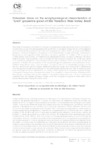Use este identificador para citar ou linkar para este item:
http://www.alice.cnptia.embrapa.br/alice/handle/doc/1060196Registro completo de metadados
| Campo DC | Valor | Idioma |
|---|---|---|
| dc.contributor.author | CHAVES, A. R. de M. | pt_BR |
| dc.contributor.author | SILVA, D. J. | pt_BR |
| dc.contributor.author | AIDAR, S. de T. | pt_BR |
| dc.contributor.author | SANTOS, L. M. | pt_BR |
| dc.contributor.author | PRADO, K. A. C. de | pt_BR |
| dc.contributor.author | COSTA, B. R. S. | pt_BR |
| dc.date.accessioned | 2017-02-16T22:51:20Z | - |
| dc.date.available | 2017-02-16T22:51:20Z | - |
| dc.date.created | 2017-01-09 | pt_BR |
| dc.date.issued | 2016 | pt_BR |
| dc.identifier.citation | Comunicata Scientiae, v. 7, n. 3, p. 362-371, 2016. | pt_BR |
| dc.identifier.uri | http://www.alice.cnptia.embrapa.br/alice/handle/doc/1060196 | pt_BR |
| dc.description | The nutrients availability can lead to changes on grapevines physiological behavior, which results in a great importance of studies regarding the application of potassium doses. The aim of this research was to evaluate the ecophysiological behavior of grapevine cultivar ?Syrah? growing under different potassium doses by fertigation, according to the determination of gas exchange, chlorophyll a, fluorescence and pigments index. Five years old plants, grafted on ?Paulsen 1103? rootstock, in a trellis system and planted at the Bebedouro Experimental Field, located in Petrolina, PE, Brazil, were evaluated. The experiment was composed by five potassium doses (0, 20, 40, 80 and 160 kg ha-1), applied by fertigation. The potassium sources were potassium sulfate, potassium nitrate and potassium chloride. The evaluations of the ecophysiologyical parameters were performed at four different times (07am, 10am, 1pm and 3pm) throughout the day on the flowering stage and the first and second fruit growth stages, determining gas exchange and chlorophyll a fluorescence and the pigments index was evaluated at the same grapevines leaves one time. Considering each evaluation period, it was observed that, according to the magnitude of the results for gas exchange, chlorophyll a fluorescence and pigments index, is not possible to indicate the best potassium dose. The climatic conditions during each period of evaluation influenced most the eco-physiological variables than the applied potassium doses, while the changes on pigments index were due to leaves development during the plant cycle. | pt_BR |
| dc.language.iso | eng | eng |
| dc.rights | openAccess | eng |
| dc.subject | Fluorescência da clorofila | pt_BR |
| dc.subject | Vale do São Francisco | pt_BR |
| dc.subject | Ecofisiológia | pt_BR |
| dc.subject | Chlorophyll a fluorescence | pt_BR |
| dc.title | Potassium doses on the ecophysiological characteristics of Syrah grapevine grown at São Francisco River Valley, Brazil. | pt_BR |
| dc.type | Artigo de periódico | pt_BR |
| dc.date.updated | 2017-02-16T22:51:20Z | pt_BR |
| dc.subject.thesagro | Uva | pt_BR |
| dc.subject.thesagro | Fisiologia vegetal | pt_BR |
| dc.subject.thesagro | Fotossíntese | pt_BR |
| dc.subject.thesagro | Potássio | pt_BR |
| dc.subject.thesagro | Vitis Vinifera | pt_BR |
| dc.subject.nalthesaurus | Photosynthesis | pt_BR |
| riaa.ainfo.id | 1060196 | pt_BR |
| riaa.ainfo.lastupdate | 2017-02-16 | pt_BR |
| dc.identifier.doi | 10.14295/CS.v7i3.1764 | pt_BR |
| dc.contributor.institution | AGNALDO RODRIGUES DE MELO CHAVES, CPATSA; DAVI JOSE SILVA, CPATSA; SAULO DE TARSO AIDAR, CPATSA; LUCIANA MARTINS SANTOS, UPE; KARINNE ALBUQUERQUE CAMPOS DE PRADO, UPE; BRUNO RICARDO SILVA COSTA. | pt_BR |
| Aparece nas coleções: | Artigo em periódico indexado (CPATSA)  | |
Arquivos associados a este item:
| Arquivo | Descrição | Tamanho | Formato | |
|---|---|---|---|---|
| Agnaldo2016.pdf | 1,45 MB | Adobe PDF |  Visualizar/Abrir |









